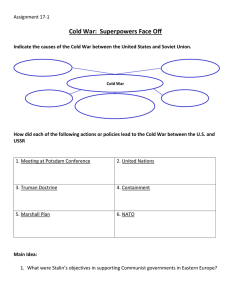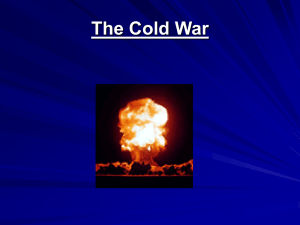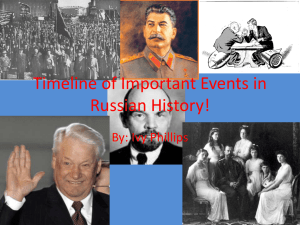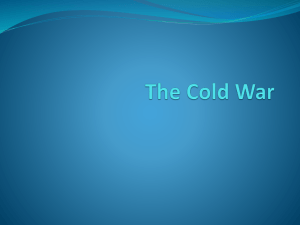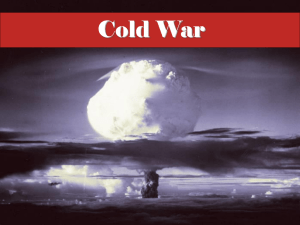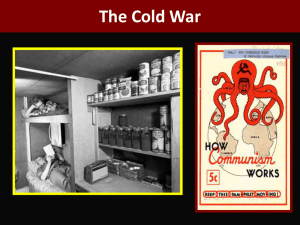File
advertisement
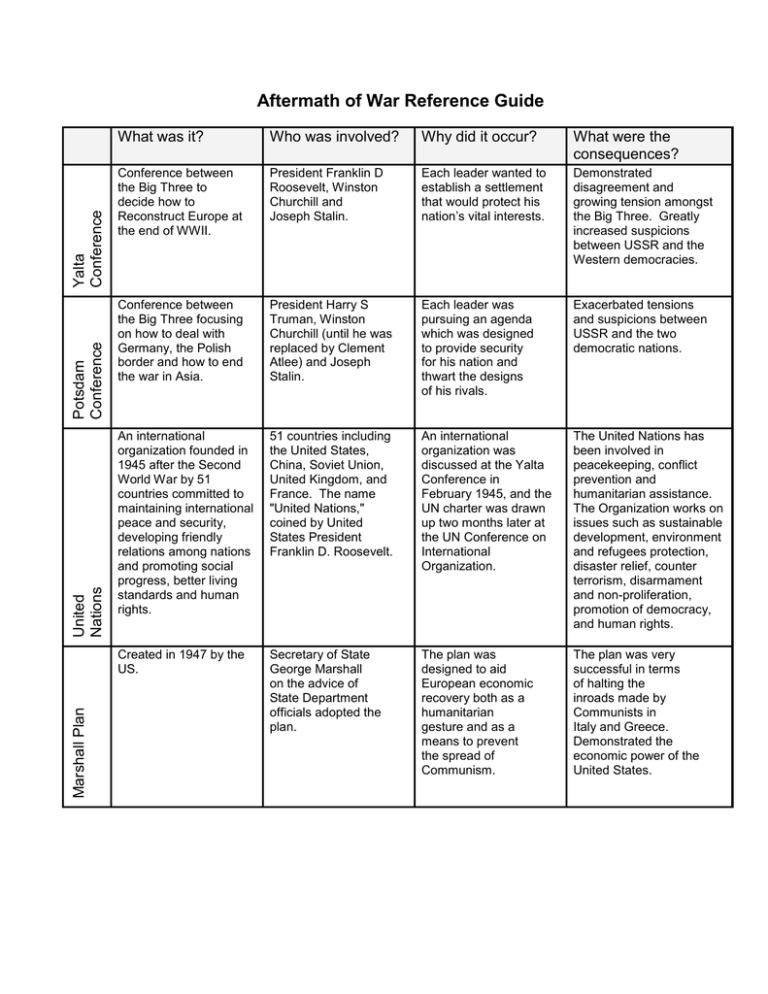
Marshall Plan United Nations Potsdam Conference Yalta Conference Aftermath of War Reference Guide What was it? Who was involved? Why did it occur? What were the consequences? Conference between the Big Three to decide how to Reconstruct Europe at the end of WWII. President Franklin D Roosevelt, Winston Churchill and Joseph Stalin. Each leader wanted to establish a settlement that would protect his nation’s vital interests. Demonstrated disagreement and growing tension amongst the Big Three. Greatly increased suspicions between USSR and the Western democracies. Conference between the Big Three focusing on how to deal with Germany, the Polish border and how to end the war in Asia. President Harry S Truman, Winston Churchill (until he was replaced by Clement Atlee) and Joseph Stalin. Each leader was pursuing an agenda which was designed to provide security for his nation and thwart the designs of his rivals. Exacerbated tensions and suspicions between USSR and the two democratic nations. An international organization founded in 1945 after the Second World War by 51 countries committed to maintaining international peace and security, developing friendly relations among nations and promoting social progress, better living standards and human rights. 51 countries including the United States, China, Soviet Union, United Kingdom, and France. The name "United Nations," coined by United States President Franklin D. Roosevelt. An international organization was discussed at the Yalta Conference in February 1945, and the UN charter was drawn up two months later at the UN Conference on International Organization. The United Nations has been involved in peacekeeping, conflict prevention and humanitarian assistance. The Organization works on issues such as sustainable development, environment and refugees protection, disaster relief, counter terrorism, disarmament and non-proliferation, promotion of democracy, and human rights. Created in 1947 by the US. Secretary of State George Marshall on the advice of State Department officials adopted the plan. The plan was designed to aid European economic recovery both as a humanitarian gesture and as a means to prevent the spread of Communism. The plan was very successful in terms of halting the inroads made by Communists in Italy and Greece. Demonstrated the economic power of the United States. Aftermath of War Reference Guide What was it? Who was involved? Why did it occur? What were the consequences? Created in 1947 Truman announced that America would support all democratic governments threatened by domestic or foreign authoritarian groups. President Harry S Truman. Stalin was extending Communist influence in violation of prior agreements. This was a major change in US foreign policy. The United States would not return to an isolationist position as it had after WWI. A defensive military alliance created in 1949 by the US and its European allies. The British and other European nations urged the US to create NATO. Member nations were: US, Canada, Britain, France, Belgium, Italy, Luxembourg, Spain, Denmark, Iceland, Portugal, the Netherlands and Norway. Persistent tensions with the USSR, the Communist takeover of Czechoslovakia and the Berlin Blockade convinced the Western Powers to establish the alliance. Established an alliance system that still exists. Helped discourage Soviet expansion. Demonstrated US leadership role in opposing Communist expansion. A Soviet Bloc alliance created in 1955. Proclaimed by Soviet Prime Minister Bulganin. Member nations were: USSR, East Germany, Poland, Czechoslovakia, Hungary, Albania, Romania and Bulgaria. In May 1955 West Germany was admitted into NATO. The Soviets saw this as a threat to their security. In response they established an alliance of their own the Warsaw Pact. Underscored the tensions in the world between the so-called “free world” and the Communists. Gave the USSR easier access to the member nations for purposes of control. Pact Warsaw Pact North Atlantic Treaty Organization (NATO) Truman Doctrine (continued)
